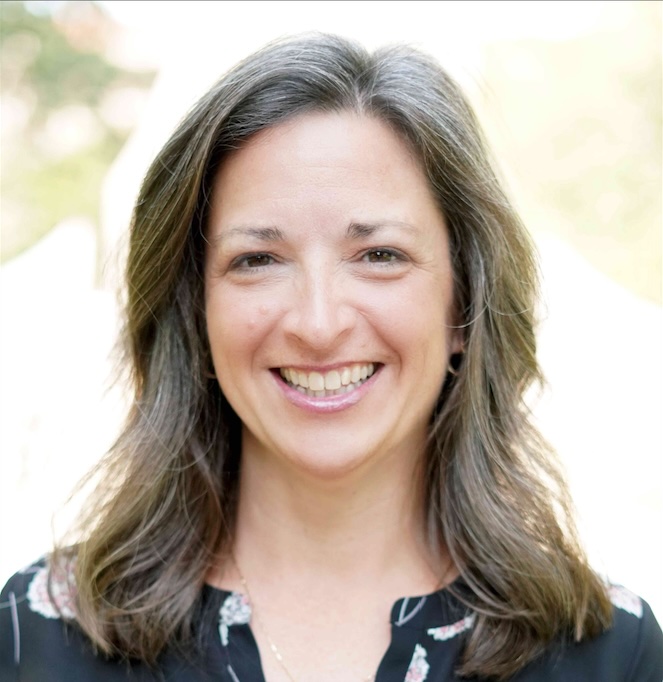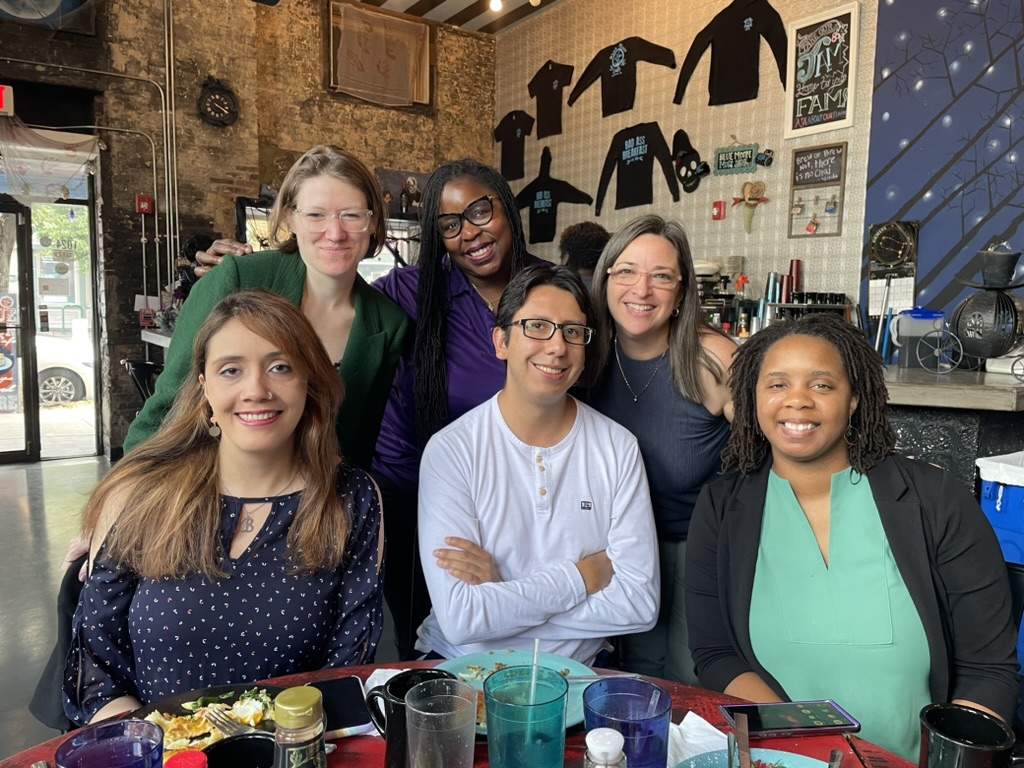Dissemination
SELECTED JOURNAL ARTICLES
Siverling, E. A., Moore, T. J., Suazo-Florez, E., Mathis C. A., & Guzey, S. S. (2021). What initiates evidence-based reasoning?: Situations that prompt students to support their design ideas and decisions. Journal of Engineering Education, 110(2), 294–317. https://doi.org/10.1002/jee.20384
Moore, T. J., Brophy, S. P., Tank, K. M., Lopez, R. D., Johnston, A. C., Hynes, M. M., & Gajdzik, E. (2020). Multiple representations in computational thinking tasks: A clinical study of second-grade students. Journal of Science Education and Technology, 29(1), 19–34. https://doi.org/10.1007/s10956-020-09812-0
Johnston, A. C., Akarsu, M., Moore, T. J., & Guzey, S. S. (2019). Engineering as the integrator: A case study of one middle school science teacher’s talk. Journal of Engineering Education, 108(3), 418–440. https://doi.org/10.1002/jee.20286
Douglas, K. A., Moore, T. J., Johnston, A. C., & Merzdorf, H. E. (2018). Informed designers? Students’ reflections on their engineering design process. International Journal of Education in Mathematics, Science and Technology (special issue for engineering education), 6(4), 443–459. https://doi.org/10.18404/ijemst.440347
Mathis, C. A., Siverling, E. A., Moore, T. J., Douglas, K. A., & Guzey, S. S. (2018). Supporting engineering design ideas with science and mathematics: A case study of middle school life science students, International Journal of Education in Mathematics, Science and Technology (special issue for engineering education), 6(4), 424–442. https://doi.org/10.18404/ijemst.440343
Guzey, S. S., Moore, T. J., & Morse, G. (2016). Student interest in engineering design-based science. School Science and Mathematics, 116(8), 411–419. https://doi.org/10.1111/ssm.12198
Moore, T. J., Guzey, S. S., Roehrig, G. H., Stohlmann, M. S., Park, M. S., Kim, Y. R., Callender, H. L., & Teo, H. J. (2015). Changes in faculty members’ instructional beliefs while implementing model-eliciting activities. Journal of Engineering Education, 104(3), 279–302. https://doi.org/10.1002/jee.20081
Moore, T. J., Tank, K. M., Glancy, A. W., & Kersten, J. A. (2015). NGSS and the landscape of engineering in K-12 state science standards. Journal of Research in Science Teaching, 52(3), 296–318. https://doi.org/10.1002/tea.21199
Moore, T. J., & Smith, K. A. (2014). Advancing the state of the art of STEM integration. Journal of STEM Education, 15(1), 5–10.
Moore, T. J., Glancy, A. W., Tank, K. M., Kersten, J. A., Stohlmann, M. S., & Smith, K. A. (2014). A framework for quality K-12 engineering education: Research and development. Journal of Precollege Engineering Education Research, 4(1), 1–13. https://doi.org/10.7771/2157-9288.1069
Kim, Y. R., Park, M. S., Moore, T. J., & Varma, S. (2013). Multiple levels of metacognition and their elicitation through complex problem-solving tasks. The Journal of Mathematical Behavior, 32(3), 377–396. https://doi.org/10.1016/j.jmathb.2013.04.002
Moore, T. J., Miller, R. L., Lesh, R. A., Stohlmann, M. S., & Kim, Y. R. (2013). Modeling in engineering: The role of representational fluency in students’ conceptual understanding. Published in the special issue on Representation in Engineering. Journal of Engineering Education, 102(1), 141–178. https://doi.org/10.1002/jee.20004
Stohlmann, M., Moore, T. J. , & Roehrig, G. (2012). Considerations for teaching integrated STEM education. Journal of Pre–College Engineering Education Research, 2(1), 28–34. https://doi.org/10.5703/1288284314653
Roehrig, G. H., Moore, T. J., Wang, H.-H., & Park, M. S. (2012). Is adding the E enough?: Investigating the impact of K-12 engineering standards on the implementation of STEM integration. School Science and Mathematics, 112(1), 31–44. https://doi.org/10.1111/j.1949-8594.2011.00112.x
Wang, H.-H., Moore, T. J., Roehrig, G. H., & Park, M. S. (2011). STEM integration: The impact of professional development on teacher perception and practice. Journal of Pre-College Engineering Education Research, 1(2), 1–13. https://doi.org/10.5703/1288284314636
Edited Books
Johnson, C. C., Peters-Burton, E. E., & Moore, T. J. (Eds.). (2021). STEM Road Map 2.0: A framework for integrated STEM education (2nd ed.). Routledge.
Johnson, C. C., Mohr-Schroeder, M. J., Moore, T. J., & English, L. D. (2020). Handbook of research on STEM education. Routledge. https://doi.org/10.4324/97804290213
English, L., & Moore, T. (Eds.). (2018). Early engineering learning. Springer. https://doi.org/10.1007/978-981-10-8621-2
Johnson, C. C., Peters-Burton, E. E., & Moore, T. J. (Eds.). (2016). STEM Road Map: A framework for integrated STEM education (1st ed.). Routledge. https://doi.org/10.4324/9781315753157
SELECTED Book CHAPTERS
Moore, T. J., Bryan, L. A., Johnson, C. C., & Roehrig, G. H. (2021). Integrated STEM education. In C. C. Johnson, E. E. Peters-Burton, & T. J. Moore (Eds.), STEM Road Map 2.0: A framework for integrated STEM education (2nd ed., pp. 25–42). Routledge.
Moore, T. J., Johnston, A. C., & Glancy, A. W. (2020). STEM integration: A synthesis of conceptual frameworks and definitions. In C. C. Johnson, M. J. Mohr-Schroeder, T. J., Moore, & L. D. English (2020). Handbook of research on STEM education (pp. 3–16). Routledge.
Moore, T. J. , Tank, K. M. , & English, L. (2018). Engineering in the early grades: Harnessing children’s natural ways of thinking. In L. English, & T. Moore (Eds.), Early engineering learning (pp. 9–18). Springer. https://doi.org/10.1007/978-981-10-8621-2_2
Moore, T. J., Stohlmann, M. S., Wang, H.-H., Tank, K. M., Glancy, A. W. & Roehrig, G. H. (2014). Implementation and integration of engineering in K-12 STEM education. In J. Strobel, S. Purzer, & M. Cardella (Eds.), Engineering in precollege settings: Research into practice (pp. 35–60). Purdue University Press. https://doi.org/10.2307/j.ctt6wq7bh
Curriculum Downloads
PictureSTEM: K-2 curricula that integrates picture books, mathmatics, science, and computational thinking through a child-friendly engineering design challenge
http://www.pictureSTEM.org
EngrTEAMS: Grades 4-8 science curricula that integrates data analysis and measurement ideas through an engineering design challenge
http://www.engrteams.org
Go
to the next tab
Previous Projects
STEM+C
More information coming...
EngrTEAMS
Tamara Moore the Principal Investigator of the NSF-funded EngrTEAMS:
Engineering to Transform the Education of Analysis, Measurement, and
Science in a Team-Based Targeted Mathematics-Science Project
(NSF – MSP, #1238140, $7,998,001), which aims to increase grade 4-8
student learning of science concepts, as well as the mathematics
concepts related to data analysis and measurement, by using an
engineering design-based approach to curricular development and
teacher professional development. The partnership involves the
University of Minnesota’s STEM Education Center (Lead Partner) and the
NSF-funded Center for Compact and Efficient Fluid Power (CCEFP) (Core
Partner), Purdue University, Saint Paul Public Schools (Core Partner),
North Saint Paul-Maplewood-Oakdale School District (Supporting
Partner), and South Washington County Schools (Supporting Partner).
These three school districts are contiguous, and represent schools
that are inner city, urban, and suburban. Together, these partners
will explore the overarching research question: What
are the effects of engineering design pedagogies and curricula
combined with a coaching model on student learning in science, data
analysis, measurement, and critical thinking? This project is
designed to help teachers develop engineering design curricular units
for each of the major science topic areas within the Minnesota State
Academic Science Standards for grades 4-8 with a focus on vertical
alignment and transition from upper elementary to middle-level. The
alignment is in both the scaffolding of the concepts and the pedagogy
used in these grades. The partnership is using summer professional
development and curriculum writing workshops paired with a cognitive
and content coaching model to allow teachers to develop engineering
design-based curricular units focused on science concepts, meaningful
data analysis, and measurement. These curricular units go through an
extensive design research cycle to ensure a quality product and then
are submitted to TeachEngineering.org, an online peer-reviewed
NSF-funded digital library, for use across the United States and
beyond. This project advances understanding about engineering
design-based pedagogies and content and cognitive coaching models in
science and the impacts of those on 4th-8th grade students’
achievement in mathematics, science, and critical thinking abilities.
It enhances the theoretical models of student learning in and
attitudes towards STEM fields. The project school partners have
diverse student populations. In particular, many of the Saint Paul
Public Schools’ students come from immigrant or refugee families, and
45% live in homes in which English is not the first language spoken.
Because the teachers who teach in high-needs schools are implementing
the curriculum modules, this project is documenting the learning
outcomes of underrepresented populations when presented with
curriculum modules. The research findings have the potential to
provide directions for designing effective curriculum and learning of
STEM. The dissemination of the curriculum modules on the peer-reviewed
NSF websites and the findings of the research studies will inform
practitioners, administrators, researchers, and policy makers who aim
to improve student achievement and interest in STEM careers.
The project, PECASE: Implementing K-12 Engineering Standards through STEM Integration (NSF
– EEC/CAREER, #1055382, $400,109), was the Early Faculty Career Award for Dr. Tamara J. Moore. The goal of this project was to understand engineering integration in K-12 schools through a STEM Integration research paradigm. The project focused primarily on how K-12 standards, curriculum, teachers, and schools implement engineering in STEM integration learning environments. The project had two main threads of research related to this purpose: The Framework for Quality K-12 Engineering Education and the PictureSTEM curricula.
The Framework for Quality K-12 Engineering Education was created to meet the growing need for a clear definition of quality K-12 engineering education. It was the result of research focused on understanding and identifying the ways in which teachers and schools were implementing engineering and engineering design in their classrooms. The framework was designed to be used as a tool for evaluating the degree to which academic standards, curricula, and teaching practices address the important components of a quality K-12 engineering education. The research from this thread included a design study on the development of the framework and an assessment of the engineering contained in the Next Generation Science Standards (NGSS) and state-level academic standards for all 50 states. Additionally, this framework could be used to inform the development and structure of future K-12 engineering education initiatives and related standards.
The PictureSTEM curricula (http://www.pictureSTEM.org) include an instructional unit at each grade level, K-2, which employs engineering and literary contexts to integrate science, technology, mathematics, and computational thinking content instruction in meaningful and significant ways. These transformative new models for STEM+C (science, technology, engineering, mathematics, and computational thinking) learning use picture books and an engineering design challenge to provide students with authentic, contextual activities that engage learners in specific science, mathematics, and computational thinking content while integrating across traditional disciplinary boundaries. These units have been classroom tested and research has been published and is ongoing regarding student learning and teacher implementation in the classroom.
Reach For The Sky (RFTS)
More information coming...
Model ... (MEDIA)
More information coming...
Return
to the first tab

